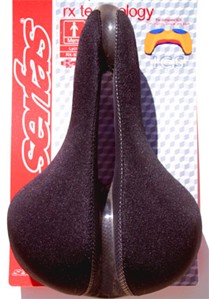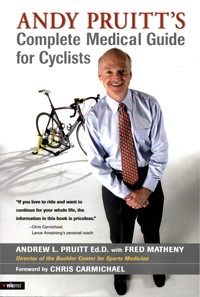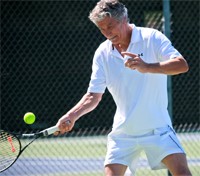|
Bicycle Seats
Author:
Stan Reents, PharmD
Original Posting:
05/06/2007 06:13 AM
Last Revision: 11/04/2018 10:57 AM
 The seat (or "saddle", if you're a serious cyclist) is perhaps the most important component on your bicycle. For many riders, having the right saddle can be the difference between logging enjoyable miles and suffering through miserable workouts. The seat (or "saddle", if you're a serious cyclist) is perhaps the most important component on your bicycle. For many riders, having the right saddle can be the difference between logging enjoyable miles and suffering through miserable workouts.
Studies show that 35-81% of cyclists experience perineal (groin) and/or buttock pain after long-distance riding. This appears to be a more frequent complaint from women as opposed to men riders (Bressel E, et al. 2003).
The high incidence of these medical problems shouldn't be surprising: Pressures generated in the perineum region while sitting on a bicycle seat can be 4-5-fold higher than pressures known to cause decubitus ulcers (commonly known as "pressure sores") in bedridden patients (Lowe BD, et al. 2004).
And higher pressures in the perineal region, in turn, lead to vascular and neurologic problems: Sitting on a bicycle seat has been shown to drastically reduce blood supply to the penis. In one study, it was reduced by as much as 70%. It made no difference whether the riders were sitting and pedalling or just sitting. Blood flow was back to normal after a 10-minute recovery period (Sommer F, et al. 2001).
Regarding neurologic problems, competitive cyclists have been noted to develop numbness of the penis and scrotum, an altered sense of ejaculation, and disturbance of normal urinary function after prolonged riding (Silbert PL, et al. 1991). This is thought to be due to irritation of the pudendal nerve, another complication of higher pressures in the perineal region, possibly leading to pudendal neuropathies (Oberpenning F, et al. 1994).
Medical issues associated with long-distance cycling are reviewed in detail in the related story "Bicycling: Medical Aspects". Here, I will review different types of seats (saddles). The following tips will help take some of the guesswork out of choosing the saddle that will work best for you.
SADDLE DESIGN
There are many different types of saddles on the market. Start to narrow down the selection by first evaluating each saddle based on these variables:
Saddle Width
Your saddle needs to adequately support your pelvis. In general, women riders need a wider seat than men. If you lie on your back with your knees bent you can feel your "sit bones." Feel for the outside edges of the bony prominences in your rear end. Then, measure the distance between your sit bones starting at the outside edge of one and measuring to the outside edge of the other. Write down this number and bring it with you when you go shopping.
Look for a saddle that is slightly wider than your sit bones. Take a measurement at the back part of the saddle. Be sure to use the edge of the saddle that is flat or semi-flat for your measurement. You are trying to measure the surface that will actually support your pelvis, not the extra material that wraps around the sides. Specialized (www.Specialized.com) even has Body Geometry® saddles that come in three different widths so you can find one that fits your body.
Saddle Transition
Viewing a saddle from above, notice the manner in which it transitions from narrow to wide. Saddles that flare more gradually tend to cause more chafing on the inner thigh. Often riders will sit further forward on these saddles, which can increase pressure on the delicate anatomy between the sit bones and the genitals. Look for a saddle that has a fairly abrupt transition from front to back. This will allow for leg movement with minimal chafing.
Saddle Profile
When viewing a saddle from the side, notice if it is either concave or flat. Saddles with a lot of concavity may feel more supportive and distribute weight better. However, they may cause increased pressure on the sit bones when riding in a more aero position.
Flatter saddles allow more adjustments in position without drastic changes in pressure. Also evaluate the profile of the top of the widest part of the saddle when looking from the front. It can be convex, flat, or concave. The goal is to support the sit bones without putting significant pressure between and forward of them. A saddle that is excessively rounded may put pressure in this area and contribute to numbness.
CHOOSING A BIKE SEAT THAT'S RIGHT FOR YOU
When it comes to choosing a bicycle seat, the options include:
- wider seats
- seats with a groove down the center
- radical new designs
Wider Seats
One study showed that pressures in the perineal region were highest when seat width was 5.5-7.5 cm, while seats wider than 9.5 cm produced the lowest pressures (Spears IR, et al. 2003). Wide seats might be welcomed by the casual cyclist, but serious cyclists would never use a wide saddle.
Serfas (www.Serfas.com) has designed bicycle seats to better accomodate female anatomy and to avoid possible impotence in males. The seats are gel-padded and available in several different styles (eg., male vs. female, racing vs. casual riding, etc.).
Seats With A Groove Down the Center
There is no question that pressures in the perineal region are higher when sitting on a "standard" bicycle seat design compared to seats with a groove down the center (Taylor KS, et al. 2002), or seats without a nose (Lowe BD, et al. 2004). However, seats without a protruding nose can lead to more weight being shifted onto the wrists and a sense of less ability to steer and handle the bike (Bressel E, et al. 2003).
In the late 1990s, manufacturers began producing saddles with holes or channels in the middle of the saddle to reduce pressure in the areas between and forward of the sit bones. Some studies have shown that saddle cut-outs can improve oxygen supply to the genitals, while others have shown little difference between saddles with and without cutouts.
Note that the position of the cutout is different in mens' and womens' saddles, so make sure you're getting the right one.
TEST RIDES
Ask your bike shop if you can test ride some saddles. Try at least three or four saddles to determine which shapes and designs will work best for you. Helpful shops will often allow you to take the saddle home and do a ride or two and still return or exchange it if it just isn't working.
Ride on an indoor trainer first to get a feel for comparing different shapes and designs. Ride in various positions on the bars when you are testing saddles (changes in bar position can change your pelvic position and the pressures at the saddle.) Once you have narrowed down your choices, be sure to ride the saddle on the road before making the final selection.
OTHER FACTORS AFFECTING SADDLE COMFORT
A number of other factors can dramatically affect the way your saddle feels and functions. Be sure that you have considered the following before making final judgment on a saddle:
Bike Fit
Proper position of your saddle as well as total bike set-up can affect saddle comfort. Saddle height, fore-aft and tilt, as well as bar position can alter pressures at your saddle. Get a proper fitting before or in conjunction with saddle testing to ensure that a poor fit is not at the root of your saddle problems.
Saddle Break-in & Replacement
Saddles need to be broken-in. They will usually become a bit more comfortable after a few months of riding. However, if symptoms like numbness or chafing occur in the first few rides, they are likely to get worse rather than better with more use.
Saddles also need to be replaced after a year or two of use depending on the materials and the amount of miles you ride. Signs that your saddle needs to be replaced include a decrease in comfort and late onset of chafing or numbness.
Biking Shorts and Lubricant
Saddle comfort is also very dependent on the surface that contacts the skin. No saddle will be very comfortable on long rides if you wear underwear or neglect to use lubrication. Be sure to wear high quality, cycling-specific shorts that have proper padding for the distances being ridden. For example, triathlon shorts will not provide adequate padding. Underwear should not be worn beneath cycling shorts, as it causes chafing. Chamois creams applied on the padding of your short or to the skin can reduce friction and chafing.
QUESTIONS
Q: Do gel seats offer any advantage over seats without a gel surface?
ANSWER: Gel has also been a method for increasing comfort; however, if used to cover the entire saddle, gel can increase the pressures between and forward of the sit bones, adding to symptoms of numbness. A moderate use of gel, positioned in the saddle where it contacts the sit bones, is most effective.
SUMMARY
There are three main ideas to keep in mind when selecting a saddle:
• Comfort: The saddle should be comfortable. It should support your sit bones and hips evenly. Choosing a gender-appropriate saddle will help with both comfort and support.
• Freedom of Movement: The saddle must allow movement without causing excessive rubbing or chafing. Your saddle should allow you to pedal without restriction. Poor fit is most noticeable when the inner thigh rubs against the edge or the flared section of the saddle. This can cause saddle sores.
• Maintain Genital Blood Flow: A properly fit saddle should not cause numbness in the genital region for either male or female riders. Increased compression on the nerves and blood vessels that supply muscle control and blood to the genitals has been cited as the key cause of erectile dysfunction in male cyclists. It is very important that you find a saddle that minimizes or eliminates symptoms of numbness when riding.
Proper saddle selection requires a little research and some test rides. Hopefully, with the information presented here, you can locate the perfect saddle.
 FOR MORE INFORMATION FOR MORE INFORMATION
Web sites:
Books:
Readers may also be interested in these reviews:
EXPERT HEALTH and FITNESS COACHING
Stan Reents, PharmD, is available to speak on this and many other exercise-related topics. (Here is a downloadable recording of one of his Health Talks.) He also provides a one-on-one Health Coaching Service. Contact him through the Contact Us page.
REFERENCES
Some of the above information was exerpted from The Quest for the Perfect Saddle, by Phil Astrachan, Senior Coach, Carmichael Training Systems, published September 5, 2006. Phil Astrachan is a licensed physical therapist who specializes in the biomechanical evaluation and treatment of endurance athletes including bicycle fit and pedal stroke evaluation. (Carmichael Training Systems was founded by Chris Carmichael, a former elite cyclist and the coach of Tour de France cyclist Lance Armstrong.)
Andersen KV, Bovim G. Impotence and nerve entrapment in long distance amateur cyclists. Acta Neurol Scand 1997;95:233-240. Abstract
Bressel E, Larson BJ. Bicycle seat design and their effect on pelvic angle, trunk angle, and comfort. Med Sci Sports Exerc 2003;35:327-332. Abstract
Lowe BD, Schrader SM, Breitenstein MJ. Effect of bicycle saddle designs on the pressure to the perineum of the bicyclist. Med Sci Sports Exerc 2004;36:1055-1062. Abstract
Marceau L, Kleinman K, Goldstein I, et al. Does bicycling contribute to the risk of erectile dysfunction? Results from the Massachusetts Male Aging Study (MMAS). Int J Impot Res 2001;13:298-302. Abstract
Nayal W, Schwarzer U, Klotz T, et al. Transcutaneous penile oxygen pressure during bicycling. BJU Int 1999;83:623-625. Abstract
Oberpenning F, Roth S, Leusmann DB, et al. The Alcock syndrome: temporary penile insensitivity due to compression of the pudendal nerve within the Alcock canal. J Urol 1994;151:423-425. Abstract
Silbert PL, Dunne JW, Edis RH, et al. Bicycling induced pudendal nerve pressure neuropathy. Clin Exp Neurol 1991;28:191-196. Abstract
Sommer F, Schwarzer U, Klotz T, et al. Erectile dysfunction in cyclists. Is there any difference in penile blood flow during cycling in an upright versus a reclining position? Eur Urol 2001;39:720-723. Abstract
Spears IR, Cummins NK, Brenchley Z, et al. The effect of saddle design on stresses in the perineum during cycling. Med Sci Sports Exerc 2003;35:1620-1625. Abstract
Taylor KS, Richburg A, Wallis D, et al. Using an experimental bicycle seat to reduce perineal numbness. Phys Sportsmed 2002;30:27-32. (no abstract)
ABOUT THE AUTHOR

Stan Reents, PharmD, is a former healthcare professional. He is a member of the American College of Lifestyle Medicine (ACLM) and a member of the American College of Sports Medicine (ACSM). In the past, he has been certified as a Health Fitness Specialist by ACSM, as a Certified Health Coach by ACE, as a Personal Trainer by ACE, and as a tennis coach by USTA. He is the author of Sport and Exercise Pharmacology (published by Human Kinetics) and has written for Runner's World magazine, Senior Softball USA, Training and Conditioning and other fitness publications.
DISCLOSURE: Neither the author, nor AthleteInMe LLC, has any financial relationships with any of the products or manufacturers mentioned in this review.
Browse By Topic:
bicycle seats, bicycles, exercise equipment, fitness gear, sports medicine, triathlon
Copyright ©2025 AthleteInMe,
LLC. All rights reserved.
|